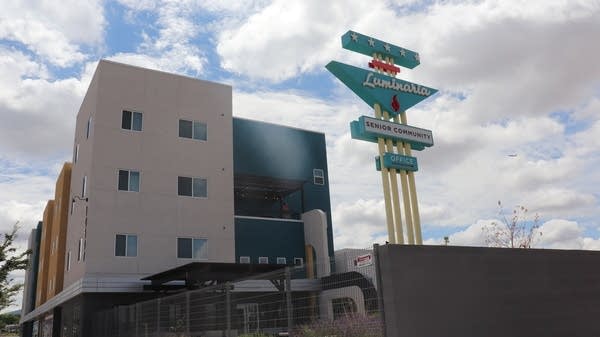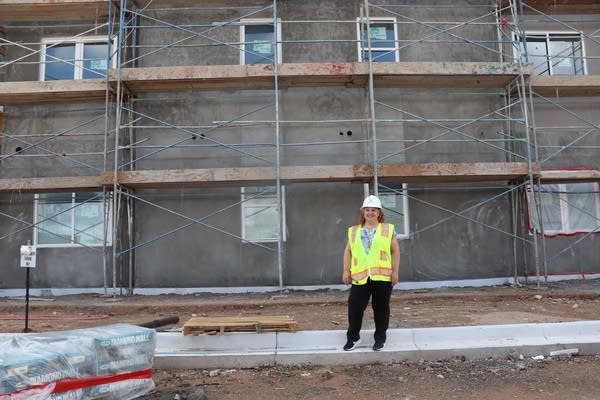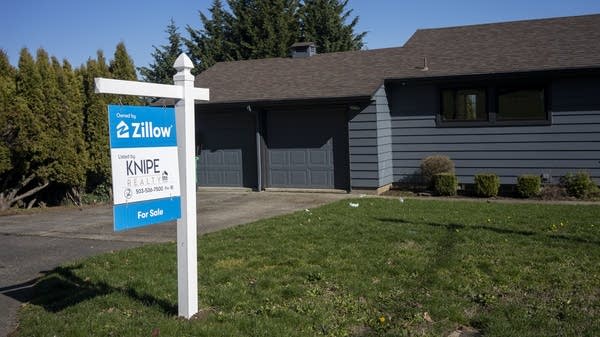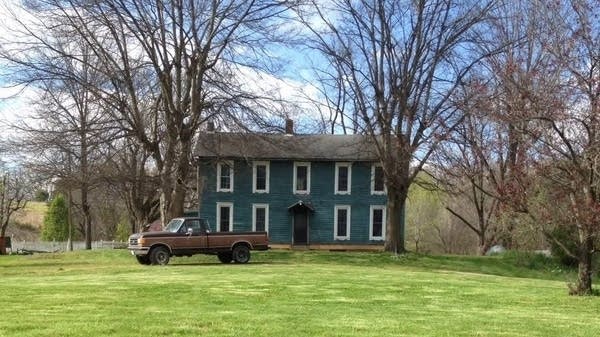Could public lands help alleviate the housing shortage in the West?
The GOP’s plan to put a for-sale sign on millions of acres of federal land out West was just nixed. But the idea has been kicking around Washington for years.

A couple of years ago, Miriam Hicks was driving down route 66 through Albuquerque’s International District when she spotted a “for lease” sign on a property that was in pretty rough shape.
“We were like, ‘That’s interesting. How do you lease a burnt building?’” Hicks said.
That burnt building was surrounded by an empty lot. It was the leasing office of a defunct mobile home park that had been acquired by the state and was now sitting vacant. Hicks, who works with the affordable housing developer Sol Housing, saw potential and got in touch with the New Mexico State Land Office.
“They had had [the property] posted for at least three years for lease, and no commercial developer had been able to make it work,” Hicks said.
Unlike those private developers, Hicks said Sol Housing was willing to take on the cost of tearing down the old structure and abating the asbestos pipes. It negotiated an extended lease agreement with the state and got to work on a brand new, 92-unit apartment complex.
“The local community asked us to really pull in the history of Route 66 as part of our development,” Hicks said.
So, they kept some of the retro mid-century flair from the old mobile park and the turquoise color scheme. Now, the Luminaria Senior Community offers affordable one and two-bedroom apartments to low-income people 55 and up. According to Hicks, that’s Albuquerque’s fastest growing demographic of unhoused people.
The Luminaria is close to public transit, jobs and services. The developer pays rent to the state which pays for higher education, K-12 public schools and health care in New Mexico. Hicks said local businesses in the neighborhood get a boost from the Luminaria’s residents.
“It’s really a triple win,” Hicks said.
At the end of the 60-year lease, Sol Housing is responsible for demolishing the Luminaria and New Mexico retains ownership over the land.

“Who knows? 60 years from now this [apartment complex] may not be appropriate,” Hicks said. “We may need something completely different. I think that’s a more responsible use of our land.”
More responsible than selling it outright to private developers, as Senate Republicans recently proposed, and losing control over how that space is used.
That proposal to put a for sale sign on millions of acres of federal land in the Western U.S. is out of the big GOP tax and spending bill. But it’s been kicked around in Washington by members of both parties for years as a possible solution to the housing shortage in the region. Danya Rumore, a professor of city planning at the University of Utah, can understand why.
“That's not totally or inherently a bad idea, but we just aren't really approaching it, in my opinion, in the right way,” Rumore said.
She said one problem with selling public land is that private industry can use it in ways that actually drive up the cost of housing.
“You need to be very careful about how the land is purchased and managed and the rules and regulations. Because it can be available for the workforce initially, but then very quickly become market rate,” Rumore said, and market rate in many western cities and mountain towns is out of reach for working class people.
Rumore said local leaders need to be involved to make sure public land transfers actually benefit their communities. And choosing the right parcels is key. A recent analysis by Headwaters Economics found that even among parcels within a quarter mile of existing communities, half of federal lands are at high risk of wildfire.
“We want to make sure we're not putting more people into harm's way,” said Megan Lawson, an economist with Headwaters.
Lawson added that public lands can seem like low hanging fruit in communities with stubborn housing shortages.
“In many of these places, land really isn't the issue. We need to be looking first within our communities, because a lot of homes could be built on land that's already available if we can focus on density,” Lawson said.
Across the street from the Luminaria in Albuquerque, Sol Housing is constructing an 82-unit apartment complex on another parcel of leased New Mexico state land. Miriam Hicks said the units should be ready for new tenants by the start of 2026.
“It’s a drop in the bucket in terms of the need. But for 82 households, it’s going to be a life changer,” Hicks said.
And at the end of the developer’s extended lease, the state of New Mexico will have the flexibility to decide on the lot’s next best use.













